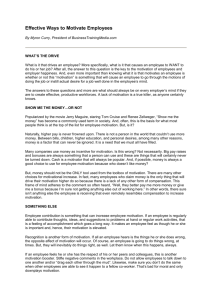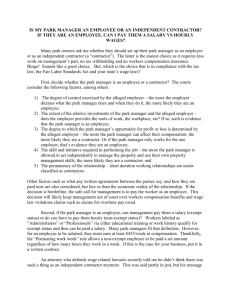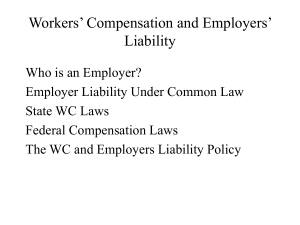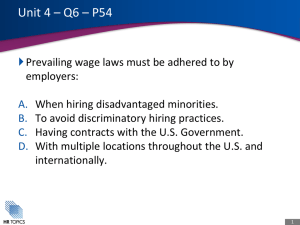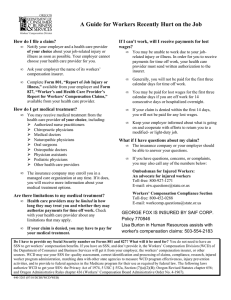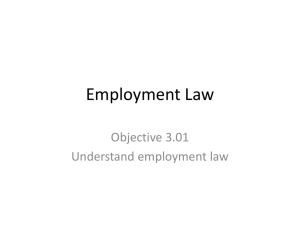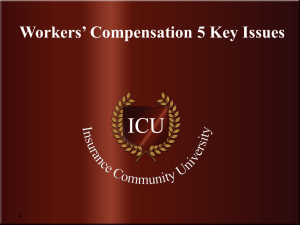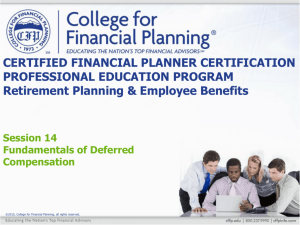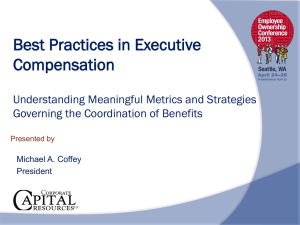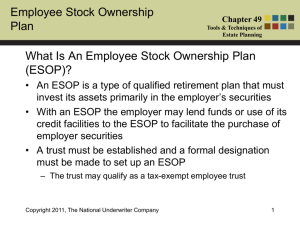Lecture 24 Profit-Sharing and Similar Plans
advertisement
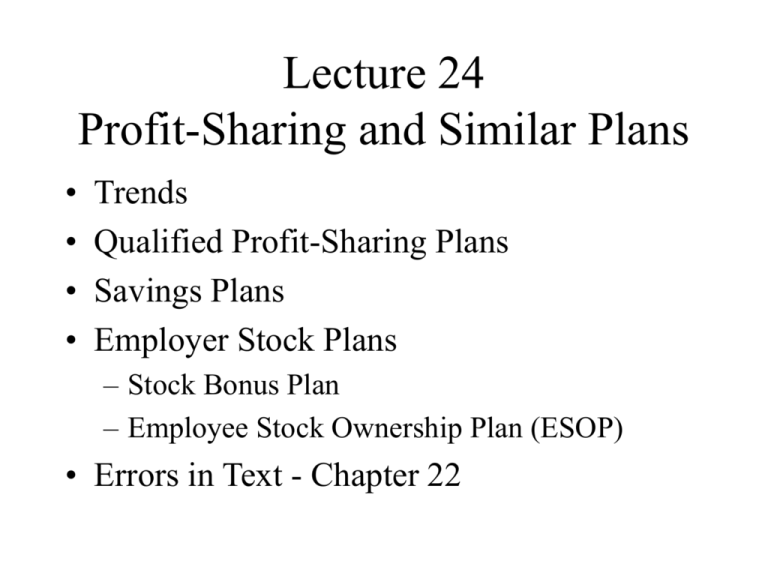
Lecture 24 Profit-Sharing and Similar Plans • • • • Trends Qualified Profit-Sharing Plans Savings Plans Employer Stock Plans – Stock Bonus Plan – Employee Stock Ownership Plan (ESOP) • Errors in Text - Chapter 22 Trends in Qualified Plans • Most new plans are defined contribution, rather than defined benefit • Some employers are shifting from defined benefit to defined contribution • Reasons – – – – Less risk to employer Recent stock market performance (since 1982) Many employees prefer defined contribution PBGC premium increases • Large, unionized companies still tend to have defined benefit plans • Now more plans are defined contribution but more workers covered under defined benefit Qualified Profit-Sharing Plans • Eligibility • Vesting • Employer contributions – Formula – Discretionary – Deductible amount limited to 15% total compensation • Allocation to employee accounts – Generally based on compensation • Age-based allocation – Requires cross-testing • Forfeitures – Can be allocated to remaining participants • Participant directed investments • Withdrawals and loan provisions Savings or Thrift Plans • • • • • Employee contributions are after-tax Matching employer contributions Voluntary Nondiscrimination rules Advantages – Tax deferred savings – Availability of funds • Disadvantages – Does not maximize tax advantage Employer Stock Plans • Advantages – – – – – Deduction for noncash contributions Creates market for employer stock Employees gain ownership interest Unrealized appreciation is deferred Provides some protection against hostile take-overs • Two types – Stock bonus plan – ESOP Stock Bonus Plans • Considered qualified defined contribution plan • Stock allocated to each employee • Distributions subject to restrictions – 10% penalty if not 59 1/2, retired, disabled or dead – Must begin within 5 years of separation or 1 year of retirement • Employee at risk for stock performance Employee Stock Ownership Plan • Three parties – Employer – Bank – ESOP • Allows company to borrow money and repay with fully deductible payments • Initially, additional tax benefits for funding ESOPs • Diversification requirement – If 55 with 10 years of service, can select to diversify Errors in Chapter 22 • Page 557 - Figure 22-1 – 1st graph is Defined Benefit • Page 560 - 4th line from bottom – Should be “(by assuming ...” • Page 562 - Examples – if 10% of compensation below wage base, then can contribute 15% (maximum) of compensation above wage base – if 4% of compensation below wage base, then can contribute 8% of compensation above wage base • Page 566 - Second paragraph from bottom – Statement “or the insurer’s term insurance rates” should be deleted





